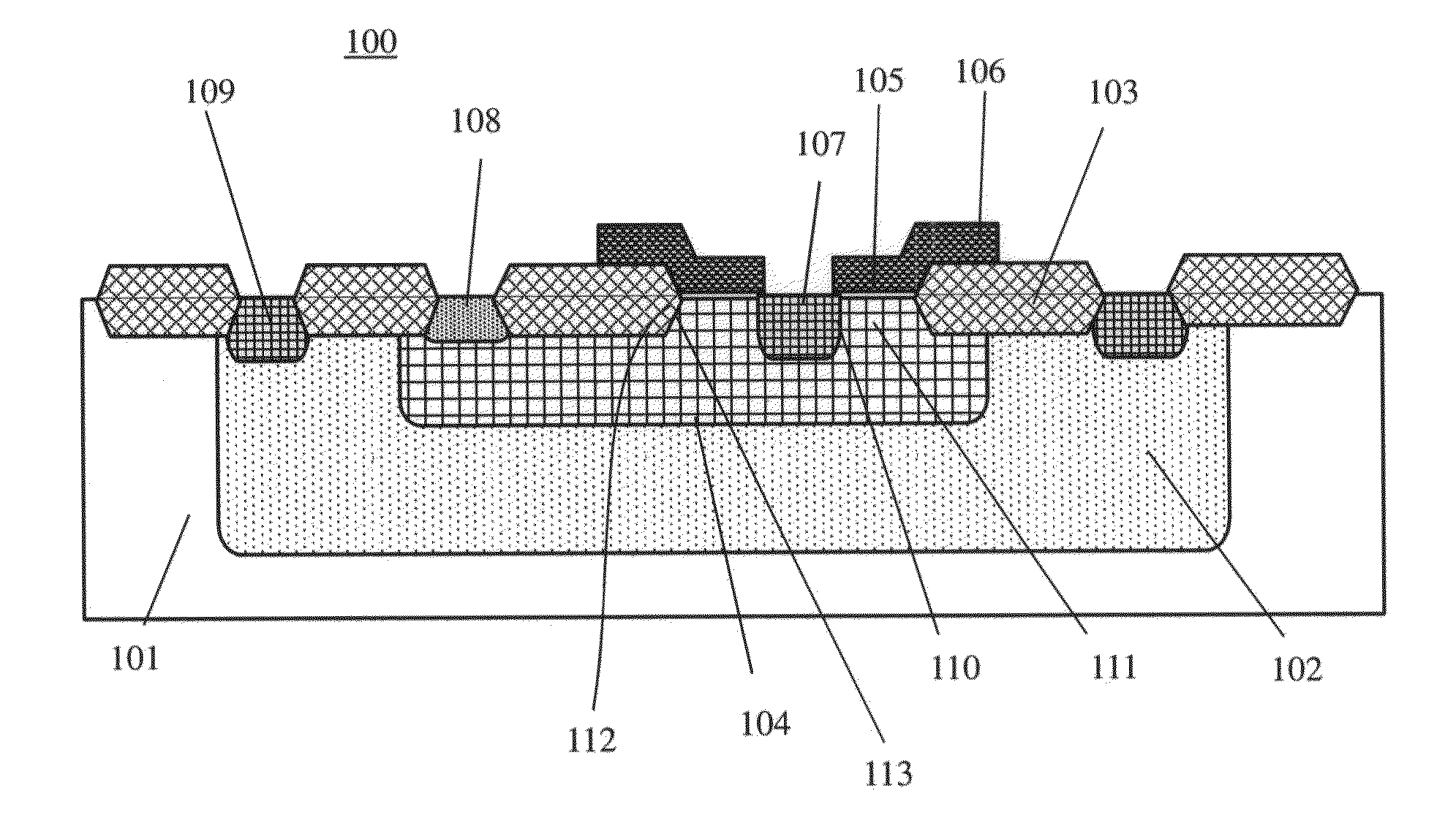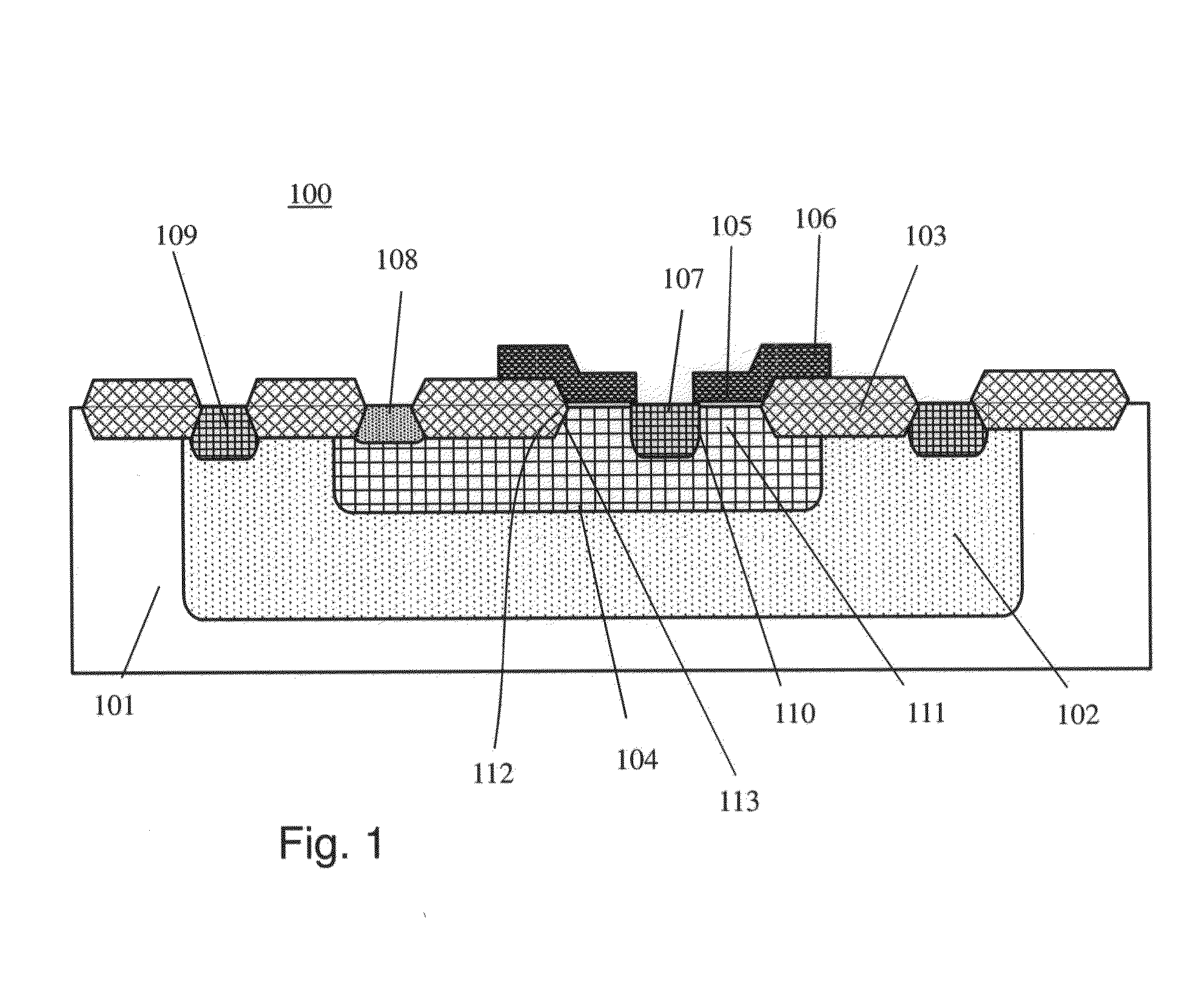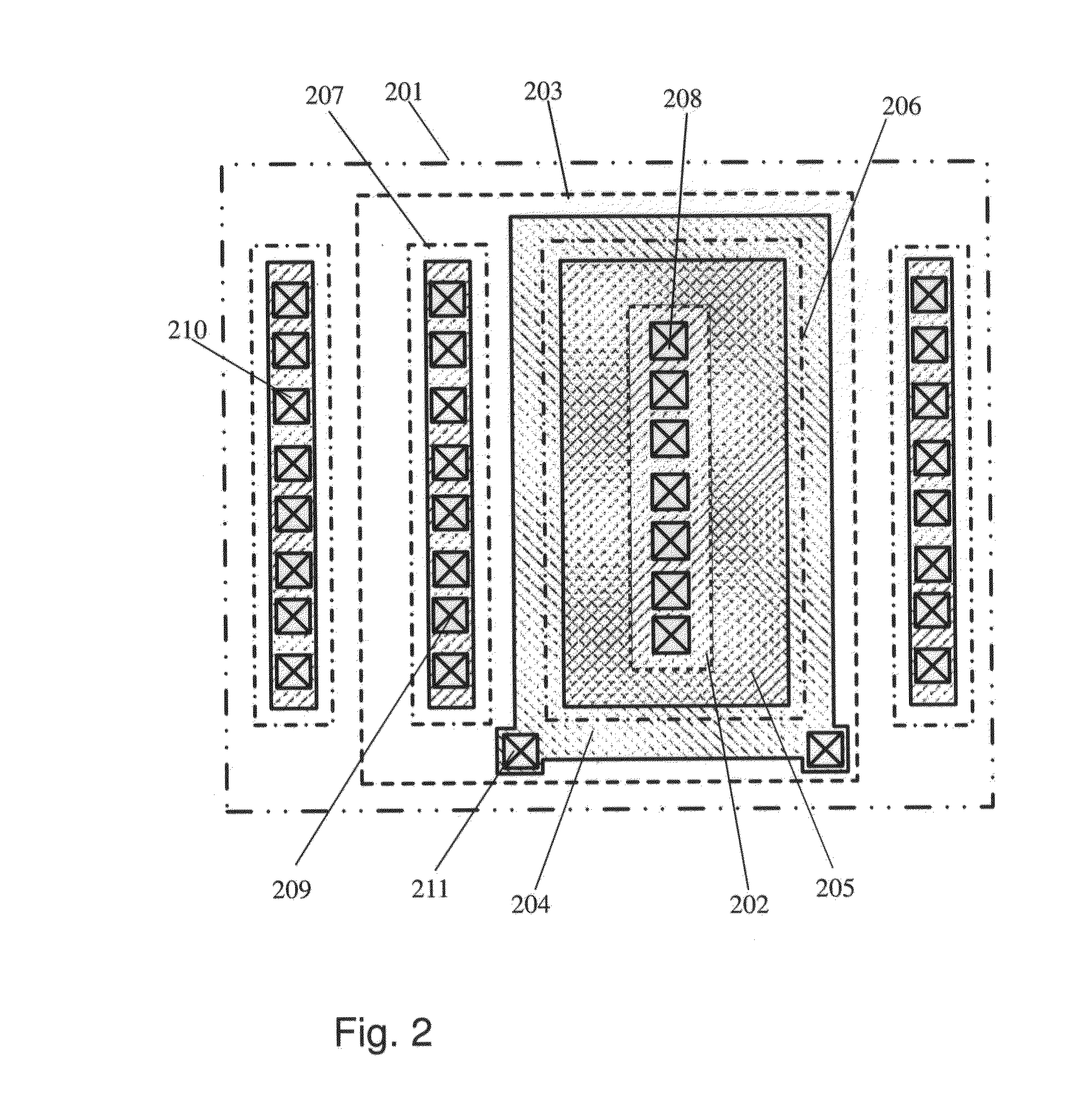Bipolar transistor
- Summary
- Abstract
- Description
- Claims
- Application Information
AI Technical Summary
Benefits of technology
Problems solved by technology
Method used
Image
Examples
Embodiment Construction
[0038]FIG. 1 shows a cross-sectional view of a bipolar junction transistor 100 according to an embodiment of the present invention. The bipolar junction transistor 100 shown in FIG. 1 is an NPN transistor formed in a p-type substrate 101. The transistor 100 comprises a deep N well region 102 formed within the p-type substrate 101. A P well region 104 is formed within the deep N well region 102, and an N+ region 107 is formed within the P well 104. These wells form the collector 102, base 104, and emitter 107 respectively of the bipolar junction transistor. A base contact 108 is formed in the base region and a collector contact 109 is formed in the collector region. On the surface of the substrate in between the contacts, LOCOS / STI field oxide separators 103 are formed. These separate the base contact 108 and the collector contact 109 on the surface of the transistor 100. The field oxide also runs from the base contact 108 towards the emitter 107 leaving a portion of the surface of t...
PUM
 Login to View More
Login to View More Abstract
Description
Claims
Application Information
 Login to View More
Login to View More - R&D
- Intellectual Property
- Life Sciences
- Materials
- Tech Scout
- Unparalleled Data Quality
- Higher Quality Content
- 60% Fewer Hallucinations
Browse by: Latest US Patents, China's latest patents, Technical Efficacy Thesaurus, Application Domain, Technology Topic, Popular Technical Reports.
© 2025 PatSnap. All rights reserved.Legal|Privacy policy|Modern Slavery Act Transparency Statement|Sitemap|About US| Contact US: help@patsnap.com



